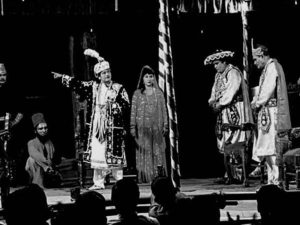Writing in India has a long history, going back thousands of years. There are many different ways people write things, like using different scripts and languages. The earliest known system of writing is found on the seals and sealings used by the people of the Indus Valley Civilization or Harappan Civilization dating to about circa 2600 – 1900 B.C. However, this script is not yet deciphered and hence the contents of these inscriptions are unknown. We also see how writing started in India and how it changed over time.

Ancient Indus Valley Civilization
A very old way of writing in India comes from the time of the Indus Valley Civilization, which was around 2600-1900 BCE. The writing on seals and pottery from that time is a mystery, and we still can’t understand what it says. It shows that people back then had a smart and organized society. However, despite numerous attempts, scholars have not been able to decipher the script, and its meaning remains a mystery. The script consists of various symbols, often engraved on small seals used for trade and administrative purposes. The undeciphered Indus script challenges understanding the specific language or languages spoken by the people of the Indus Valley. The lack of a deciphered script limits our knowledge of the civilization’s literature, religious practices, and other aspects of daily life. Despite the mystery, we can say the people in the back were living their lives peacefully.
Brahmi Script and Ashoka’s Edicts
The Brahmi script, emerging around the 6th century BCE, stands as a crucial milestone in the history of writing in India. a new script called Brahmi came into use. It was based on an older script called Aramaic. Emperor Ashoka helped spread Brahmi by putting important messages in different languages on rocks and pillars. Brahmi is considered one of the earliest scripts to be used for writing the various languages spoken in ancient India. Emperor Ashoka, a prominent ruler of the Maurya Dynasty in the 3rd century BCE, played a pivotal role in popularizing the Brahmi script. Known for his conversion to Buddhism he spread the messages through his writings and spread awareness about Buddhism.
Devanagari and Sanskrit
Around the 4th century CE, a new script called Devanagari became popular. It was used for writing Sanskrit, the classical language of ancient India. Devanagari, which means “divine abode,” had a special way of arranging letters. It became the favorite script for many important works, including the Mahabharata and Ramayana epics. Devanagari became widely adopted for writing Sanskrit, the classical language of ancient India. This script is known for its distinctive features, including a characteristic arrangement of letters and the ability to represent the complex phonetics of Sanskrit. This Devanagari was very popular in ancient India.
The start of writing in India is proof of its ancient and diverse culture. From the time of the Indus Valley to today, writing has been crucial in preserving and sharing knowledge, stories, and religious texts. The different scripts show the richness of India’s languages, each telling a special story of language and culture.
ARTICLE BY – PINAL LIMBACHIYA | EDITED BY – SAHIL HARVANI



